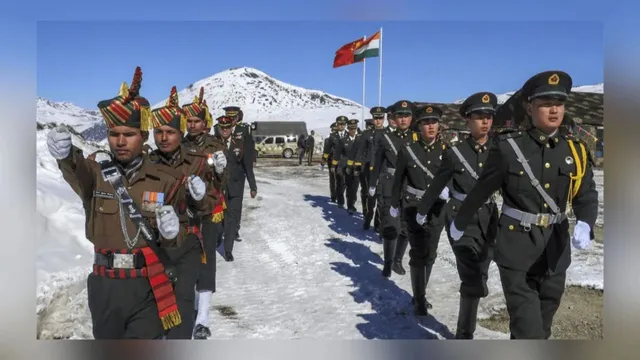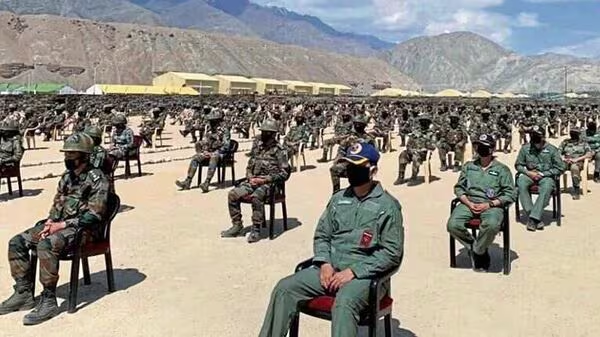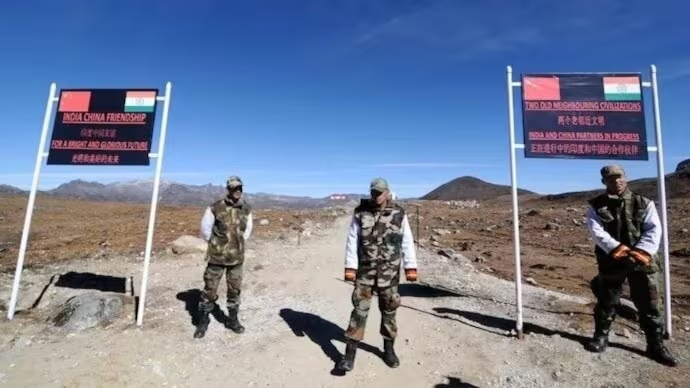The Highlights:
The country of India and its neighbor China completed a big disengagement process among the troops at two vital points on the Line of Actual Control in eastern Ladakh-Dep Sang and Demchok, after years of an increasingly strained military situation that went on for years. It is a significant step ahead toward the resolution of long-standing territorial disputes between both nations, signaling an important change in border security and diplomatic relations.
Background: Galwan Valley and the Rise in Tensions
Long-standing border disputes fuel the friction between India and China, but things began heating up quite clearly in June 2020, with the deadliest ever clash in Galwan Valley between Indian and Chinese troops. The aftermath saw successive rounds of high-level talks, which interlaced with periods of military standoffs over multiple contested locations along the LAC. With its recent disengagement successful in both Depsang and Demchok, that represents an important milestone to these higher levels of tensions.

Basic Information of the Divorce
These strategic places will gradually pull back troops, uproot the temporary structures of military posts, and move back their equipment into the rear position. An accord which is a consequence of the outcome of diplomatic and military talks between both sides, Indian and Chinese allows both sides Indian and Chinese to resume some level of patrolling at the spots, which had been in force from the date they started holding their first standoff for which patrolling rights by both the sides never returned to pre-existing positions, rather withdrawn almost to positions that have prevailed since April 2020.

Diplomatic Framework and Military Coordination
The de-escalation agreement resulted in a final product coming out of several bilateral talks; the latest of which involved Indian Prime Minister Narendra Modi and Chinese President Xi Jinping on the sidelines of recent BRICS Summit in Kazan, Russia. By this diplomatic engagement, they mutually reaffirmed commitment towards restoring peace at the LAC and devising protocols to prevent future clashes in the region. In addition, the military level dialogue thus far has set parameters to carry on peace and normalization activities across other disputed areas apart from Depsang and Demchok.
Strategic Imperative of Depsang and Demchok
Depsang and Demchok are strategic places for the simple reason that they are along the main supply routes and are critical access points along the LAC. The disengagement at these places is especially important as it would enable both sides to minimize friction in places that had been heavily fortified after the 2020 clashes. Restoration of access to traditional patrolling routes and grazing grounds also forms a confidence-building measure that helps to engender a cooperative spirit in managing the border.
Broader Implications for India-China Relations
This will help to unlock such a prospect at other frictional points along the LAC too. Even with that, however, the military analysts say there are many disputes in many other sectors, and thus, these relations between India and China can become normal only by continued dialogue and confidence building measures. This disengagement will also affect engagement with other fronts for China and India. Some of those can also have an effect in the areas of economic cooperation as well as diplomatic cooperation too.
India and China agreed to keep open channels for further discussions on border management as they move toward a more diplomatic approach in dealing with complex territorial issues. Other Asian nations closely follow the two big powers’ interactions. A successful long-term framework of disengagement will thus set a precedent for solving conflicts across other contentious borders globally.
Conclusion
The disengagement of troops at Depsang and Demchok in eastern Ladakh marks an important milestone in India-China relations. This development reiterates a common interest in keeping the peace and avoiding war along the LAC. There is still much work to be done, but the joint withdrawal of troops and equipment is a step in the right direction for two nations whose relationship impacts the broader geopolitical landscape in Asia.
This article reflects upon recent developments regarding the disengagement between India and China and its broader implication for peace along the Line of Actual Control and stability in the region.
For Latest News Updates Click Here
